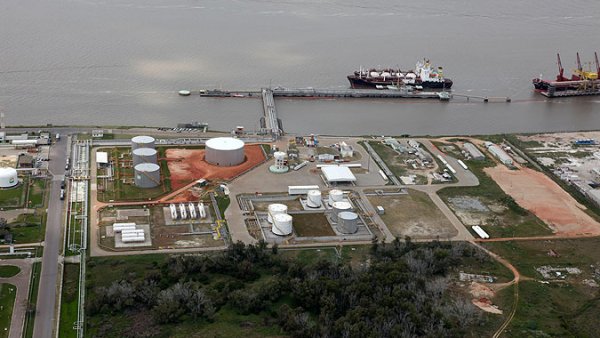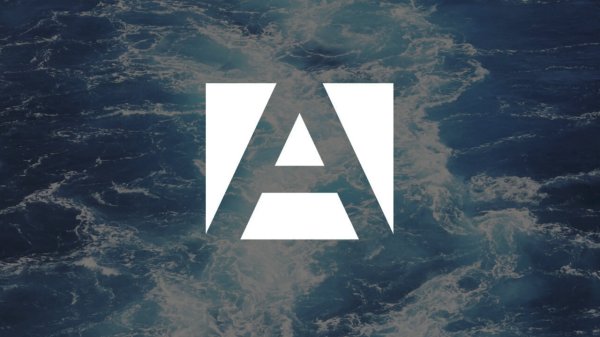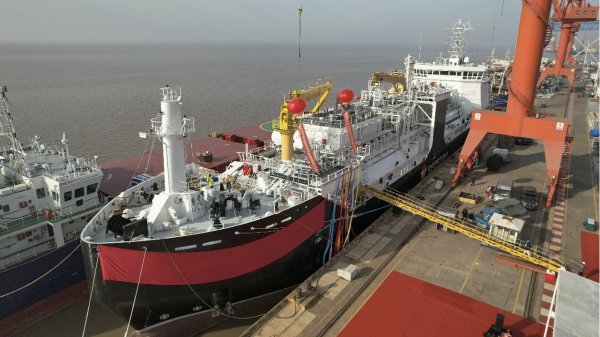World's first LNG-fuelled icebreaker bunkered in Pori
The Polaris received 700 cubic metres of LNG on 10th January.
The world's first LNG-powered icebreaker, the Polaris, was bunkered in Pori this week.
The vessel, operated by icebreaking service company Arctia Oy and owned by the Finnish Transport Agency (FTA), set off from Katajanokka, Helsinki, for icebreaking duty in the Bothnian Bay and arrived at the Skangas LNG terminal in Pori on 10th January.
During the bunker delivery, the Polaris received approximately 700 cubic metres of LNG in what was described by supplier Skangas as "a successful bunkering operation".
"The Pori terminal is located by a deep and wide fairway, so it was easy to access and we kept on schedule. At the terminal, we stocked up on food provisions and received almost 700 cubic metres of LNG fuel," said Simo Haaslahti, Arctia's chief officer on the Polaris.
"The bunkering took place safely and efficiently. It's great to see how professionals take care of bunkering. Our tanks are now full and we can head north for some serious icebreaking action," added Arctia's chief engineer on the Polaris, Juha Kannisto.
The Polaris is the first icebreaker in the world capable of running on both liquefied natural gas (LNG) and ultra-low-sulphur diesel (ULSD). The vessel's total output of about 22 megawatts (MW) also makes it Finland's most powerful icebreaker; it has an icebreaking capacity of 1.2 meters at a speed of 6 knots.
The vessel entered into operation on 1st November 2016. Its main task is fairway icebreaking in the Baltic Sea, but it can also perform oil spill response operations, emergency towing and rescue operations.
The Polaris's inbuilt oil recovery system, supplied by Lamor, enables it to collect 1,015 cubic metres oil at a rate of 200 cubic metres per hour in harsh weather conditions.
The main particulars of the Polaris have been listed below.
Year built: 2016
Flag: Finland
Owner: Finnish Transport Agency
Length: 110 m
Breadth: 24.4 m
Draught, design: 8 m
Speed: 17 kn
Gross tonnage: 9300
Deadweight: 3000 t
Crew: 16 (+8)
Classification: Lloyd's Register
Ice class: PC4
Diesel-electric propulsion
Main engines: Wartsila 2x 6000 kW, 2x 4500 kW, 1x 1280 kW, Dual fuel
Azimuth propeller units: ABB Azipod 2x 6500 kW (stern), 1 x 6000 kW (bow)
LNG tanks: 2 x 400 m3
Oil recovery capacity: 1400 m3
Towing winch: 300 m, 110 t
Bollard pull: 214 t
Icebreaking capability 3.5 kn / 1.8 m
The vessel, operated by icebreaking service company Arctia Oy and owned by the Finnish Transport Agency (FTA), set off from Katajanokka, Helsinki, for icebreaking duty in the Bothnian Bay and arrived at the Skangas LNG terminal in Pori on 10th January.
During the bunker delivery, the Polaris received approximately 700 cubic metres of LNG in what was described by supplier Skangas as "a successful bunkering operation".
"The Pori terminal is located by a deep and wide fairway, so it was easy to access and we kept on schedule. At the terminal, we stocked up on food provisions and received almost 700 cubic metres of LNG fuel," said Simo Haaslahti, Arctia's chief officer on the Polaris.
"The bunkering took place safely and efficiently. It's great to see how professionals take care of bunkering. Our tanks are now full and we can head north for some serious icebreaking action," added Arctia's chief engineer on the Polaris, Juha Kannisto.
The Polaris is the first icebreaker in the world capable of running on both liquefied natural gas (LNG) and ultra-low-sulphur diesel (ULSD). The vessel's total output of about 22 megawatts (MW) also makes it Finland's most powerful icebreaker; it has an icebreaking capacity of 1.2 meters at a speed of 6 knots.
The vessel entered into operation on 1st November 2016. Its main task is fairway icebreaking in the Baltic Sea, but it can also perform oil spill response operations, emergency towing and rescue operations.
The Polaris's inbuilt oil recovery system, supplied by Lamor, enables it to collect 1,015 cubic metres oil at a rate of 200 cubic metres per hour in harsh weather conditions.
The main particulars of the Polaris have been listed below.
Year built: 2016
Flag: Finland
Owner: Finnish Transport Agency
Length: 110 m
Breadth: 24.4 m
Draught, design: 8 m
Speed: 17 kn
Gross tonnage: 9300
Deadweight: 3000 t
Crew: 16 (+8)
Classification: Lloyd's Register
Ice class: PC4
Diesel-electric propulsion
Main engines: Wartsila 2x 6000 kW, 2x 4500 kW, 1x 1280 kW, Dual fuel
Azimuth propeller units: ABB Azipod 2x 6500 kW (stern), 1 x 6000 kW (bow)
LNG tanks: 2 x 400 m3
Oil recovery capacity: 1400 m3
Towing winch: 300 m, 110 t
Bollard pull: 214 t
Icebreaking capability 3.5 kn / 1.8 m

|
IMO approves pricing mechanism based on GHG intensity thresholds
Charges to be levied on ships that do not meet yearly GHG fuel intensity reduction targets. |
|
|
|
||

|
VARO Energy expands renewable portfolio with Preem acquisition
All-cash transaction expected to complete in the latter half of 2025. |
|
|
|
||

|
NYK trials biofuel in milestone coal carrier test
Vessel is used to test biofuel for domestic utility company. |
|
|
|
||

|
H-Line Shipping orders LNG bunkering vessel
Vessel with 18,000-cbm capacity to run on both LNG and MDO. |
|
|
|
||

|
How to engineer and manage green shipping fuels | Stanley George, VPS
Effective management strategies and insights for evolving fuel use. |
|
|
|
||

|
Swedish government bans scrubber wastewater discharges
Discharges from open-loop scrubbers to be prohibited in Swedish waters from July 2025. |
|
|
|
||

|
MAN Energy Solutions achieves 100% load milestone for ammonia engine
Latest tests validate fuel injection system throughout the entire load curve. |
|
|
|
||

|
Petrobras secures ISCC EU RED certification for B24 biofuel blend at Rio Grande
Blend consisting of 24% FAME is said to have been rigorously tested to meet international standards. |
|
|
|
||

|
Stolt-Nielsen to fully control Avenir LNG with acquisition
Share purchase agreement to buy all shares from Golar LNG and Aequitas. |
|
|
|
||

|
Bureau Veritas supports launch of CIMC SOE's LNG bunkering vessel
Handover of Seaspan Energy's cutting-edge 7,600-cbm vessel completed. |
|
|
|
||
Related Links
- · Dual-fuel icebreaker delivered in Helsinki [Insights]
- · 'Most eco-friendly' LNG-powered icebreaker presented at CIMAC Congress [Insights]
- · Finland [Directory]
- · Pori [Directory]

